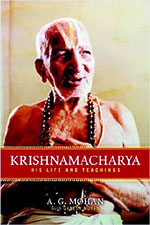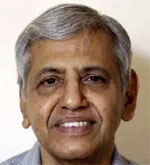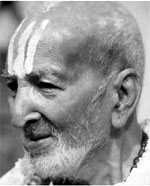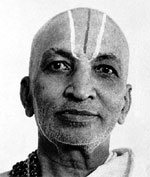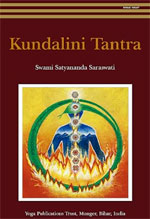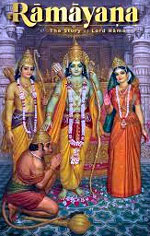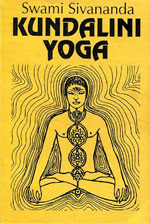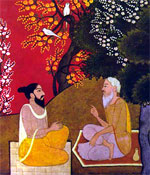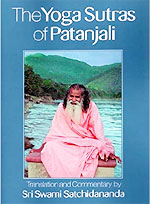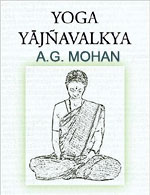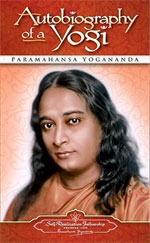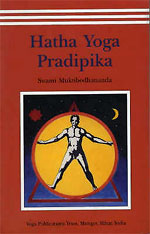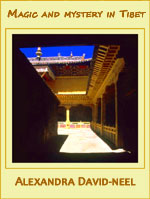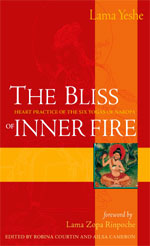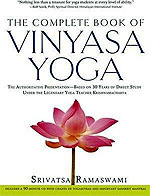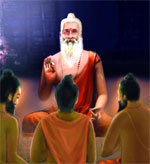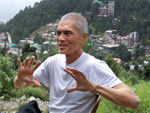

Krishnamacharya Blogs
Tirumalai Krishnamacharya Blogs
Yoga Book Reviews
YOGA Book Reviews
FREE online books
BooksFree.org | Project Gutenberg | Open Library | ManyBooks | Free-eBooks.net | Bookboon | Smashwords | PDFBooksWorld | PDF Drive | Google Books
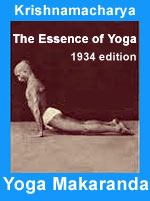 Jun 18, 2018 - Oct 4, 2023
Jun 18, 2018 - Oct 4, 2023
Yoga Makaranda

Author: Sri Tirumalai Krishnamacharya (1888-1889)
ISBN-10: 8192071618
ISBN-13: 978-8192071619
Genre: yoga, spirituality
Pages: 169 pdf pages
Country: India
Publisher:
Madurai C.M.V. Press
Publication date: 1934
Rating:
![]()
![]()
![]()
![]()
![]() (3 out of 5 stars)
(3 out of 5 stars)
My Preface
Finding the Teacher
When I felt strong in my practice, I felt the need to level-up. But finding the right teacher proved challenging. Then it dawned on me, "why not read the book of a yoga teacher I admire and have him as my guru?". That's my story with Sri Tirumalai Krishnamacharya.
Summarizing/Commentary-ing by Chapter
This blog is a book summary/discourse as I read it - starting in Dharamshala, India in June 2018. It serves as my reference and perusal. By summarizing every chapter (not just reviewing the book), I also ensure that I understood it as I practised it. I stopped reading this book and began re-reading it from the beginning in September 2023.
Poorly Written Book
As TK himself admitted, the Maharaja of Mysore commissioned him to write a book on yoga. TK wasn't too interested in doing it but he would not defy the Maharaja so he rushed it in 3 days. This should have been a first draft - proper books by credible authors usually take 3 self-reviewed drafts, many more subsequent drafts [about 7 more], an editor's draft [which includes developmental editing, line editing, copy editing, and proof reading] before they are published. But TK submitted the first draft as the final book - a 3-day book! As can be expected, it was poorly written with lots of inconsistencies, non-coherence, bad structure, etc. Plus, the translation to English seems problematic as well.
This was my first serious yoga book and it served as a baseline to all other readings I would do. This was a mistake. I got so confused because of the so many inconsistencies. In hindsight, given the yoga books I have already read, I would have made "Hatha Yoga Pradipika" as my baseline and supplement that with other yoga books like this one.
Streamlining the Content
I initially summarized by chapter according to the book layout.
But it later dawned on me that the book was badly structured. The different limbs of yoga were not coherently presented under its category but sprinkled across several chapters. Thus, I re-structured the content so that all asanas are under "Asanas" and all other limbs are lined up in hierarchial sequence under the "8 Limbs". This makes the reading more coherent and streamlined.
Creating New Topics
There are some essential topics not covered in detail, but mentioned across the book. I searched for all instances of words pertaining to this topic and created a new 'section' devoted to that topic exclusively.
Augmenting my Experience and Insight
Additionally, I augment what is written with my own experience and knowledge of the topic (in red). Thus, as you read this, you may not be able to discern what the book is saying and what I'm adding to it (unless I make the text red. But for just small parts, I don't bother to 'red' it).
Yoga Makaranda 2
Since Yoga Makaranda 2 is a continuation of Yoga Makaranda 1, it made sense to combine the 2 books into one book summary. FYI, Yoga Makaranda 2 has an additional 37 asanas with an addition of 25 variations. If there is a duplication of asanas in the 2 books, I merged the content under one asana.
On Illustration
Yoga Makaranda 2 is particularly challenging because of the complex descriptions of the asanas without an illustration! (unlike Yoga Makaranda 1) Searching on the internet for the appriate picture is also daunting because the names are so uncommon there's no listing on the internet (e.g. Sirsasana Ekapada Viparitakarani). I had to take extra effort to find the closest picture to it.
1934 Original
The book was written in 1934 by T. Krishnamacharya - the renowned Father of Modern Yoga. This was translated from its original source - free from all the revisions made and added/subtracted by modern-day yoga teachers about yoga. A second book, Yoga Makaranda II (YMII), came later as a sequel, continuing where the first book left off.
Be warned that this book was rushed and written in just 7 days. It's not a comprehensive book on yoga by any measure. I don't think there was any editor at that time who polished the writing. Yes, it's poorly written with a lot of inconsistensies (translation also has a lot to do with this - this was translated by an Indian guy who didn't know much about English). But, this is the only substantive book written by the master (he has also written a few minor ones) and this is what we have to work with.

THE BOOK
Glossary of Terms
- abhyasa - constant practice or exercise
- adho - down or below e.g. Adho Mukha Svanasana - Downward Facing Dog
- adhyayanam - study, learning, reading e.g. especially of the vedas
- anga - part, limb e.g. Ashtanga, 8 limbs
- angula - breadth of one of your fingers e.g. so, the angula of one person is different from another
- ardha - half e.g. Ardha Baddha Padmottanasana - half-bound lotus forward bend
- Asana - Pose e.g. Ubhaya Padangusthasana
- Angusta - Big Toe e.g. Ubhaya Padangusthasana
- atma - true self, one that cannot be destroyed (same as citta? no beginning and no end?)
- baddha - bound e.g. Ardha Baddha Padmottanasana - half-bound lotus forward bend
- bhuja - arm or shoulder eg Bhuja Pidasana (Shoulder-Press)
- caitanya - good functioning, vitality, sensation
- citta - mind e.g. mind is not the thought. Citta is never born and never dies
- dakshina - right (side) e.g. doing the right side of an asana
- divya drishti - divine sight; divine understanding
- dosha - disturbance or disorder of the three humours of the body e.g. kapha, vatta, pitha
- ekagrata - one-pointed focus e.g. ekagrata citta, 1-pointed focus of the mind
- eka pada - one leg e.g. Tiryanga Mukha Eka Pada Paschimottanasana (oblique one-legged forward bend pose)
- gnanam - knowledge or understanding derived from meditation on higher truth
- granthi - combination, meeting place hmmm...I thought this meant 'knot' or obstruction in the passage of prana
- guna - quality or attribute
- hasta - hand e.g. Hasta Mudra (Hand Mudra)
- indriyas - senses. There are 11 - 5 of expression or action (karma), 5 of cognition (gnana) and the mind
- jadam - senseless; insentient; has no cognitive ability
- jagrata avastha - waking state
- jathara agni - the digestive fire of the stomach
- jivatma - individual soul enshrined in a human body, in contrast to 'paramatma', the universal spirit
- kapha - phlegm — one of the three humors of the body
- konasana - angled pose, like if the legs are far apart e.g. Upavistha Konasana
- krama - proceeding step by step according to a regular order or custom eg if I make my own sequence, like Wim Hof Maha Vedha, then it's a krama
- kriya - activity
- kumbhaka - retention of breath, either inside or outside the body
- mantra - sacred hymn or prayer; a sacred text
- mozham - distance between elbow and tip of finger
- mudra - symbolic gesture; seal (of a part of the body)
- mukha - face. e.g. Urdhva Mukha Svanasana - Upward Facing Dog
- nadi - energy channel, a etheric tubular vessel of the body, conduit
- nidra - sleep, eg yoga nidra or yogic sleep where the body goes to sleep but the mind remains awake
- nyasa - the assignment of various parts of the body to various deities through the use of prayer and gesture
- Pada - Foot e.g. Ubhaya Padangusthasana
- padangusthasana - big toe pose e.g. Supta Padangusthasana
- paramatma - supreme spirit or Brahman, in contrast to 'jivatma' which is the spirit enshrined in the human body
- parsva - side or side-flank e.g. Supta Pada Parsvagusthasana
- pitta - one of the humors of the body, its excess and vitiation
- pralaya - dissolution, death, destruction (of the world)
- prana vayu - breath, breath of life, vital air, subtle life force that gives life in the universe
- prapanca - universe, manifested world
- prasarita - spread out or wide-legged. This is often used to name a yoga pose, e.g. Prasarita Padottanasana (wide-legged standing forward bend)
- puraka - inhalation of the breath into the body, filling it up
- recaka - exhalation of the breath
- roga - disease
- sadhana - sustained effort leading to accomplishment; means of accomplishment eg yoga is my sadhana and abhyasa is practicing yoga
- sakti - power, energy, strength, eg Kundalini shakti
- sampurna - complete
- sanatana - dharma ancient eternal path
- sancharam - movement, travel, passage
- sastra - scripture, sacred book
- sattvaguna - the quality of goodness or purity
- shatkriya - purificatory processes
- siddhi - accomplishment; supernatural and marvelous powers (there are 8)
- sthiti - remaining stationary in a position or state
- supta - reclining or lying down e.g. Supta Padangusthasana
- tamas - quality of darkness, inertia, or ignorance
- tiryanga - oblique or sideways e.g. Tiryanga Mukha Eka Pada Paschimottanasana (oblique one-legged forward bend pose)
- Ubhaya - Both e.g. Ubhaya Padangusthasana
- upasana - formal meditation
- upavistha - seated e.g. Upavistha Konasana
- urdhva - upward e.g. Urdhva Mukha Svanasana - Upward Facing Dog
- utthita - extended or stretched e.g. Utthita Parsvakonasana (Extended Side Angle Pose)
- vama - left (side)
- vidya - knowledge, yoga vidya is knowledge in yoga
- vata wind - one of the three humors of the body, its excess and vitiation
- vayu - air; wind; vital air
- vidya - knowledge; science
- vinyasa - an arrangement or assemblage (of a sequence of asanas)
- vritti - movement or activity
Introduction
Why Do Yoga?
(p9)
No matter what you do in life, you need to have a strong body, clear mind and balanced emotions. Yoga can bring about these qualities.
The intent of yoga is to withdraw the mind from external influence (Pratyahara) and develop a single focus (Dharana) for deep concentration (Dhyana) until consciousness-divinity-universe converge (Samadhi).
Who has the Authority to practise Yoga?
Anybody can practice yoga except those who are cheats, scoundrels and criminals. Why? They will only cause destruction to themselves and others through their perceived 'cunning'. People who are serious in their practice, ethical and with devotion, and who practice with their gurus become adepts quickly.
Benefits of Yoga
Yoga practice provides progressive benefits - you don't have to wait for 'enlightenment' to get results. Yama harmonizes you with society, niyama removes your anger and hatred, asana makes you strong, pranayama makes you healthy and live long. With 2 to 3 hours of daily practice according to guidelines (yama, niyama, etc.), shakti can be achieved in a year. Through the practice of yoga, one achieves atma gnanam (knowledge or understanding of the true self through meditation).
Sleep
To withdraw the mind from external distractions, it needs to be healthy to begin with. This is why sleep is essential - it allows the mind to collect itself and keep its sanity.
Dreamless sleep (Delta Waves, frequency range: 0.5 TO 4 Hz, sattvic quality, yoga nidra) is the best sleep because it allows the body to go into deep recuperation, healing and experience atma. A dream sleep (Theta waves, frequency range: 4 Hz to 8 Hz, tamasic quality) still offers benefits but not as much as a dreamless sleep. Ideally, sleep should be the complete cessation of all mental activities.
Yoga Primer
4 Types of Yoga
- Hatha Yoga - focuse on shat kriya, asana, pranayama, bandha and mudra (no yama, no niyama and no meditation)
- Mantra Yoga - yoga using mantra to quiet the mind and reach an altered state of consciousness
- Laya Yoga - same as Kundalini yoga, a yoga designed to awaken Kundalini. Laya means 'absorption' of the mind into the divine, similar to or the same as samadhi. This is not a beginner yoga
- Raja Yoga - yoga of the mind through meditation. This controls the senses so focus is inwards. This is the yoga in Patanjali's sutras
- *** Karma Yoga - surprisingly, this yoga is not included in the book. This is the yoga of action...of being a service to humanity
- *** Jnana Yoga - also not mentioned in the book. This is the yoga of knowledge...scouring through texts, scriptures, expanding intellect to realize God
- *** Bhakti Yoga - yoga of devotion. Attaining enlightenment through worship and devotion to a deity
Practice Basics
Ideal Place to Practice Yoga
A yoga practice is ideal when done in a clean, open space, away from the crowd where it's quiet and peaceful. It should be conducive to spirituality.
Long-term, I envision a patch of land overlooking the sea, close to my water spring, where I can develop a yoga ashram.)
Breathing
- breathing must always be long and thin, slow and steady...never rushed. Shallow and fast breathing does not provide any benefit. Even after holding the breath (kumbhaka), the breathing should remain slow and steady. If you had to rush the breath, then you held the breath too long
- only nose breathing (no mouth breathing)
- equal time between inhalation and exhalation
- the breath comes first, followed by the movement. Not the other way around
- never rush the breath to pace with the movement. Take your time breathing and let the movement wait as long as it takes. Breathing is the priority and not the movement
- fully inflate the lungs on the inbreath and fully empty the lungs on the outbreath (no residual air left inside)
- when holding the pose, the focus is on the breath
- unless specified, especially when doing asanas, breathing should be Ujjayi Pranayama - slow and full breathing with the rubbing sensation on the throat
- generally, inhalation is when the body expands or opens up (like Upward Dog). Exhalation is when the body contracts (like in a forward bend)
Diet Restriction
Food intake should only be 1/2 of the stomach's capacity (Mitahara) - never overeat. Food, sleep and activities should be no more and no less than ideal - just right. Oily and fried food should be avoided. Butter is not good, but ghee is good. Avoid eating after sunset.
Good Activities
Get up at 4 am and meditate or do yoga. Take a bath before sunrise on a river, stream or pond.
Nadis
Nadis are energy pathways that should always be clear and unobstructed. There are 72,000 nadis converging on the Kandasthana, an egg-shaped etheric organ above the genitals and below the navel (in some schools, the nadis converge to their respective chakras and not the Kandasthana).Of the 72,000 nadis, 10 nadis are important in the following order:
- Sushumna - between Ida and Pingala on the center in front of the spine, going all the way to the top of the head
- Ida - female, left side of nose, extends to the tip of the left nose
- Pingala - male, right side of nose, extends to the tip of the right nose
- Gandhari - on the left eye
- Hasti Jihwa - on the right eye
- Poosha - on the right ear
- Yasaswini - on the left ear
- Alampusa - on the face
- Guhu - at the base of the genitals
- Sankini - located in the Muladhara chakra
More on Nadis in this section: Nadis
6 Shatkriyas
Shatkriyas are purification processes preparing the body for optimum yoga practice. When the body/system is not cleansed, progress in yoga is slow - it's like driving a car with a handbrake. Shatkriyas are so essential that Nath yogis give it more importance than Yama or Niyama. Shatkriya is essential in maintaining proper balance of the doshas in the body - pitta, vata and kapha. It is also vital in maintaining the flow of prana through the nadis.
- Dhauti Kriya - purification of the digestive system
-
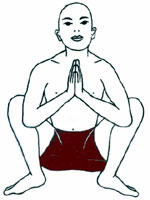 Basti Kriya - purification of the colon and lower intestines
Basti Kriya - purification of the colon and lower intestines
- Jala basti - inserting a tube on your anus to draw water in (preferably in a river), holding the water, and expeling it. This expedites the elimination process and gives luster in the person
- Shala basti - drawing in air to the colon. Go into Karnapidasana and begin to contract and release the anal muscles
- Neti Kriya - the book talks about using a thread running from the nose and out to the mouth. You pull on each direction 12x. Release through the mouth. This balances the kapha dosha.
- Nauli Kriya - on Uddiyana bandha, the middle abdomen is pushed out and made to 'dance' left and right. This cleans the digestive system.
- Trataka Kriya - gazing on one object until the eyes tear up. This destroys all eye diseases and makes one adept at Sambhavi mudra
- Kapalabhati Kriya - it's odd that the book talked about water cleansing through nose and mouth - this is already part of my Neti Kriya.
Chakras
Chakras are energy hubs where all the 72,000 nadis converge. A whole field of study is covered in this section: Chakras
Prana Vayu
These are energetic winds. There are 10 vayus flowing within their respective nadis. When a vayu flows outside its nadi, disease happens. When sickness happens, it means prana vayu is not flowing - maybe the nadis are blocked and need to be cleaned through Shatkriya. To have a long life (like the rishis), prana vayu must be controlled through Pranayama.
More details here: Prana Vayu
20 Mudras
Mudras are energy seals/locks that redirect prana to specific parts of the body and prevent prana from leeching out of the body. Asana and Pranayama make the body strong and live longer. However, Mudra and Bandha develop the Siddhis and cultivate power.
Details in this section: 20 Mudras
8 Limbs of Yoga
1. Yama
This is a moral code consisting of 10 tiers to harmonize oneself with society and develop compassion for all living beings
- ahimsa - don't harm anyone
- satya - speak your truth
- asteya - do not steal
- brahmacharya - no sex
- kshama - don't be reactive
- dhrthi - mental fortitude
- daya - good intentions
- arjavam - honest state of mind
- mitahara - don't fill-up the stomach, half full is good
- sauca - be clean, inside and out
More extensive writings here: Yama
2. Niyama
(p31) This is a moral code for oneself in order to be optimized. This builds fortitude and strength of character, dissolves anger, hatred and promotes peace and tranquility for self.
- tapas - mental equanimity in the face of struggle; between doing it easy and hard, choose to do it the hard way
- santosha - maintain balance of the mind - peaceful mind
- asthikya - acknowledge god
- daana - charity without expectation of return
- isvara puja - be devoted to your god
- siddhanta vakya sravana - study the sacred books
- hri - own up to your mistakes and don't it again
- mathi - devotion to god
- japa - recite the mantras
- homam - spiritual rituals
More extensive writings here: Niyama
3. Asana
(p59) Asanas are the physical poses in yoga that develop strength, stamina, flexibility and balance. They range in difficulty from a simple forward bend to a complicated body contortion fit for a circus act. They prime the body before taking on the sensitive 4th limb of Pranayama (breath-control). There used to be inumerable asanas during the ancient times, but now, they seem to be funneled down to 84 essential poses.
More extensive writings here based on this book: Asana
4. Pranayama
(Pranayama was not discussed in the book) Prana is what the yogis call the subtle life energy that sustains us. Pranayama is the methodical breathing process that optimizes ingestion, retention and absorption of prana. There are specific techniques from beginner to advanced. The yogis make a dire warning though of practising advanced pranayama when the practitioner is not ready. Think: a 9-volt bulb experiencing a 30-volt surge.
More on Pranayama in this section: Pranayama
5. Pratyahara
Pratyahara is to keep the indriyas (senses) under control. More on Pratyahara in this section: Pratyahara
6. Dharana
(p22) The mind is under control and primed for the Ekagrata Citta - the one-pointed focus. More on Dharana in this section: Dharana
7. Dhyana
This is achieved when the mind becomes one-pointed. At this point, intentions become reality. The yogi can dispense a curse or a boon. More on Dhyana in this section: Dhyana
8. Samadhi
(Samadhi was not discussed in the book) As the 8th limb in the 8 Limbs of Yoga, it is the final stop. Samadhi translates to 'being together', which could mean bliss, self-realization or enlightenment. Other texts say you forget yourself completely and be one with the object of meditation. Other texts say Samadhi is when you realize that the fundamental nature of reality is emptiness - and you experientially (not just conceptually) go through that process.
More on Samadhi in this section: Samadhi
Bibliography
I took the effort to list down the bibliography because this is a great source of pre-modern yoga (pre-1934) where tradition followed a lineage. This was before Yoga Alliance took over, before Lululemon became a fad and before yoga became big business.
- Rajayoga Ratnakaram
- Hatha Yoga Pradipika
- Yoga Saravalli
- Yoga Balaprathipikai
- Ravana Nadi (Nadi Pariksa of Ravana)
- Bhairava Kalpam
- Sri Tattvanidhi
- Yoga Ratnakarandam
- Mano Narayaneeyam
- Rudrayameelam (Rudrayamalam)
- Brahmayameelam
- Atharvana Rahasyam vii
- Patanjala Yogadarshanam
- Kapilasutram
- Yoga Yajnavalkya
- Gheranda Samhita
- Narada Pancharatra Samhita
- Satvata Samhita
- Siva Samhita
- Dhyana Bindu Upanishad
- Chandilya Upanishad
- Yoga Shika Upanishad
- Yoga Kundalya Upanishad
- Ahir Buddhniya Samhita
- Nada Bindu Upanishad
- Amrita Bindu Upanishad
- Garbha Upanishad
Inconsistencies
It's confusing when there are inconsistencies and reversed names or just wrong statements within the book and between the 2 books:
- Kandasthana - this is a ball of flesh where 72000 nadis converge. One part says it is located between the navel and the genitals. But in another section, it says it's located in the muladhara cakra.
- Chakras - In Yoga Makaranda I, 10 chakras are listed. In Yoga Makaranda II, only 7 chakras are listed - the surya, manas and brahmaguha chakras are omitted.
- Muladhara Chakra - In YMI, he Muladhara Chakra is next to the rectum towards the spinal tip. In YMII, it's between the root of the reproductory organs and anus.
- Samana/Vyana vayu - there is an interchange between the names and locations of these 2 vayus
- "...blood to flow properly in the nadis" - blood flows through the blood vessels and energy flows through the nadis. This statement is wrong.
Ending Thoughts
Why Only 3-Stars?
I default to Krishnamacharya as my guru, but to be honest, this book is not an easy read (thus the 3-star rating) - structure is bad (I had to rearrange content of the book to provide coherent flow - like structuring content according to the 8 limbs), translation, the inconsistencies (10 chakras in YMI while only 7 chakras in YMII), the ambiguities and the sheer believabality of some claims ("do this pranayama and not even death can touch you", or "once you can hold your breath for 1.5 hours..."). This is by no means a comprehensive book on yoga. It would have been accurate to just entitle the book, "Essential Asanas" as focus was only done on asanas. The other aspects of yoga were merely a passing mention - shatkriya, chakras, the other 7 limbs, etc. Instructions are hard to follow, "The 7th vinyasa of the right-side buddhasana is the 13th vinyasa of the left-side buddhasana. These are like the 7th and the 12th vinyasas of ekapada sirsasana."
Something New
Doing the doable poses here introduced me to poses I haven't really done. Either they were not included in the yoga videos I trained on, or not included in sequences in the yoga classes I attended to. Some poses I haven't done in a long time and it was good to do them again and include them in some of my routines.
Embellishments?
Even though some texts might sound hyperbolic, I defer to A.G. Mohan who once did an eyeroll when TK claimed to know 64 variations of Sirsasana. To prove his point, TK actually performed all of the asanas - in his 80s! TK doesn't seem to be one who would embellish a story or a claim. His claim of defying death (he is dead as of this writing) could be about reaching Samadhi and transcending the limits of the physical body (there are avatars claimed to have lived over hundreds of years - Mahavatar Babaji).
Bridging Tradition with Neo-Yoga
I consider this a credible bridge between pre-modern yoga (traditional yoga) and coming-of-age yoga (that is mostly asana-heavy), that can get one deeper into the practice. The section about Prana Vayu alone has taken me months to get a foot-hold on. But then there are the other disciplines - pranayama, mudras, chakras, etc. Just on this book alone, you can be established in the practice already.
Perfect 'How To' Yoga Book?
Would I recommend this book as a 'how to' in yoga? If only for asana, yes. For for something more comprehensive, maybe Hatha Yoga Pradipika (by Swami Muktibodhananda). It's also better structured and written, although still a difficult read. No, I can't say I've found the perfect comprehensive yoga book. Not yet.
--- Gigit (TheLoneRider)
YOGA by Gigit ![]() |
Learn English
|
Learn English ![]() |
Travel like a Nomad
|
Travel like a Nomad ![]() |
Donation Bank
|
Donation Bank ![]()
Leave a comment?
Next story:

![]()
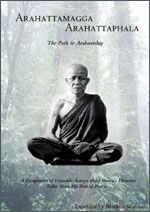
![]()
![]()
Arahattamagga Arahattaphala - the path to Aranhantship
(Dec 30, 2018) A monk narrates his meditation journey that ultimately led to an arahantship. His personal tale is compelling for a seeker like me because it puts flesh and blood and human struggle into the difficult path of deepening a meditative practice that transcends textbook descriptions and definitions...more »»
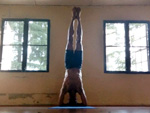
![]()
Conducting Yoga Classes at Pema Thang Guest House, Dharamshala, India
(June 24 - July 8, 2018) I found it odd and interesting for a Filipino like me to go to India and teach yoga to Indian nationals. It felt like teaching an Italian how to cook pasta. But as yoga teacher at Pema Thang Guest House where guests are mostly Indians, that's how it happened....more »»

![]()
Peoplescape of Dharamshala, India
(June 14 - July 8, 2018) Like Rishikesh, most of the people I met in Dharamshala came to pursue their spiritual path. The higher up in elevation they settle at (from McLeod Ganj, going up to Dharamcot/Bhagsu, to Upper Dharamcot/Upper Bhagsu), the more filtered they got towards the path. But every once in a while, I'd meet someone interesting in McLeod Ganj as well.....more »»
Dharamshala Map

Dharamshala (city), India
 Pema Thang Guest House & Restaurant - central McLeod Ganj location, quiet area, Kangra Valley view, near Tsuklakhang (main temple) and market
Pema Thang Guest House & Restaurant - central McLeod Ganj location, quiet area, Kangra Valley view, near Tsuklakhang (main temple) and market
Dharamshala, HP 176057 INDIA
Travel Tips
- the Dalai Lama's scheduled public teachings in Dharamshala are as follows: September 4-7, 2018 | October 3 - 6, 2018 | February 19, 2019. To register, visit this page: https://www.dalailama.com/office/contact
- in June, the average temperature high is 31° and average low is 21°. It rains usually in the afternoon/evening beginning mid-June
- July and August see the most rainfall, up to 22 inches
- Dharamshala International Film Festival (DIFF) happens 30 October to 2 November in McLeod Ganj
- at the Tibetan Museum in McLeod Ganj, there is a daily 11am and 3pm movie screening of Tibet-related issues at INR 10
- trekking is one of the highlights in Dharamshala - to Dharamkot, Bhagsu, cutting through Dhauladhar to the upper Ravi Valley and Chamba district, or the 8km trek to Triund
- Wednesday is vegetarian day - other days, meat dishes are served by cafes and restaurants
- Bhagsu and Dharamkot are a quiet alternative to McLeod Ganj. They are also cheaper in accommodation when the Dalai Lama is in town and McLeod Ganj hostels are fully booked (with inflated prices)
- If you wish to stay in McLeod Ganj but want quiet, stay along Jogiwara Road where balconies will offer scenic views
- short power outages frequently happen during the day
- for quiet stays and scenic views, stay in Upper Dharamkot or Upper Bhagsu. The "upper" you go, the cheaper the accommodation prices go.
- in Upper Dharamkot is a cluster of cafes and lodging (Salvation Cafe area)where the community is chill
How to get to Dharamshala from Rishikesh by bus
 Bus - Rishikesh to Dharamshala is 449 kms. The usual route is to go to Haridwar and take the State transport buses to Lower Dharamshala, but it's less hassle to get a bus from Rishikesh that go all the way up to McLeod Ganj - a little more money (INR 1150) but worth it specially if you a carry bulky pack. You will leave Rishikesh 4pm and arrive in Dharamshala the following day (you save one night lodging) at 7am.
Bus - Rishikesh to Dharamshala is 449 kms. The usual route is to go to Haridwar and take the State transport buses to Lower Dharamshala, but it's less hassle to get a bus from Rishikesh that go all the way up to McLeod Ganj - a little more money (INR 1150) but worth it specially if you a carry bulky pack. You will leave Rishikesh 4pm and arrive in Dharamshala the following day (you save one night lodging) at 7am.
How to get to New Delhi Airport from McLeod Ganj, Dharamshala by bus
 Bus From McLeod Ganj bus station, take a semi-sleeper a/c overnight bus, INR 1000, 11.5 hours (7pm to 6:30am) straight to Kashmiri Gate Train Station in New Delhi.
Bus From McLeod Ganj bus station, take a semi-sleeper a/c overnight bus, INR 1000, 11.5 hours (7pm to 6:30am) straight to Kashmiri Gate Train Station in New Delhi.- walk to Kashmiri Gate (no need to ride a tuktuk)
- take the Yellow Line towards Huda City but get off at New Delhi Station (INR 16)
- From New Delhi Station, take the Airport Metro Train (INR 60) and get off at the airport
Travel Tips for India
- e-VISA - visa on arrival is no longer done. Tourists should apply online for an e-VISA. Tourist e-VISA for 60 days = US$51.25 (including surcharges, non-refundable). NOTE: e-VISA is only honored in 25 designated airports and 5 designated seaports (Cochin, Goa, Mangalore,Mumbai,Chennai). You CANNOT do a land crossing using an e-VISA.
- US$1 = Indian Rupee (INR) 67.18
- nearly every food served is spicy...there is no escaping it
- other travel destinations in India
- always good to have an Indian SIM. It's handy to get wifi in some cafes
India Blogs
- 16 Days in McLeod Ganj, Dharamshala: Goodbye India June 23-July 8, 2018
- Peoplescape of Dharamshala, India June 14 - July 8, 2018
- Visiting the Tibet Museum June 27, 2018
- In Search of a Tibetan Yantra Yoga Teacher June 25, 2018
- Conducting Yoga Classes at Pema Thang Guest House, Dharamshala, India June 24 - July 8, 2018
- Life in Upper Bhagsu, Dharamshala June 16-23, 2018
- Trekking to Naddi from Upper Bhagsu, Dharamshala June 19, 2018
- Matters of the Heart Jun 17, 2018
- A First Timer in Dharamshala Jun 14, 2018
- 29 Hours in New Delhi Airport July 9-10, 2018
- Meditation with Shirly Pnina at Lodi Garden, New Delhi May 15, 2018
- A First-Timer in New Delhi, India May 12-17, 2018
- A 26-Day Mini-Life in Rishikesh May 18 - June 13, 2018
- Peoplescape of Rishikesh May 18 - June 13, 2018
- Rafting the Ganga River with Greg Goldstein June 1, 2018
- White Water Rafting on Ganga River, Rishikesh May 25, 2018
- Satsang (spiritual discourse) by Sadhvi Bhagawati Saraswati May 21, 2018
- Ganga Aarti (devotional fire ritual) at Parmarth Niketan Ashram May 21, 2018
- Bouncing Back into Yoga in Rishikesh May 21, 2018
- Exploring Rishikesh, India May 18, 2018
- India e-VISA snag May 9, 2018
SONAULI
General Travel Tips
- arrive early - in case there is a snag (visa snag, documentation snag, transport ticket snag, etc.), you will have ample time to troubleshoot the problem if you arrive early (to the airport, to the bus terminal, etc.)
- put detailed itinerary on the Calendar apps of your smart-phone according to timelines - this is where you do all your thinking and planning. Once written down, you don't have to think anymore while you are on the journey...you just follow the steps. This frees your mind for something else that might happen while you are already en route
- avoiding scams - as a general rule, I ignore the touts or anyone I don't know who call out to me. The calling comes in many forms - "Hi! Where are you from?", "Excuse me! Excuse me!", "Where are you going?". I don't look them in the eye and I remain non-verbal with them. If you reply to them, you just gave them an 'in' to hound you. In order not to look rude, I smile and wave the 'not interested' hand to them, without looking at them.
- power bank - hand-carry your power bank. Do not check it in. You can be called in when you are already inside the plane to go all the way to the loading dock so you can personally remove the power bank...and chances are, you'll have to surrender it to them. And you might delay the plane departure!
Currency Converter
»» back to Book Review
»» back to Yoga
»» back to Peoplescape
»» back to Homepage
ARCHIVE 2025:
JAN |
FEB |
MAR
1970 |
1973 |
1975 |
1976 |
1977 |
1979 |
1981 |
1996 |
2000 |
2001 |
2002 |
2003 |
2004 |
2005 |
2006 |
2007 |
2008 |
2009 |
2010 |
2011 |
2012 |
2013 |
2014 |
2015 |
2016 |
2017 |
2018 |
2019 |
2020 |
2021 |
2022 |
2023 |
2024 |
2025 |
ALL BLOGS

